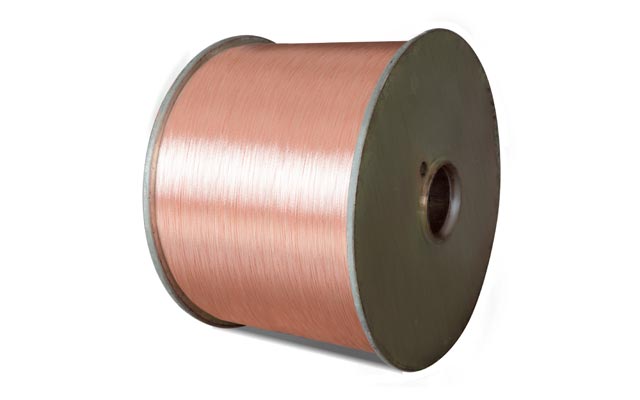Symbol CuPurity ≥99.95%Size 0.025-500 mm2Type Copper Stranded WireElongation ≥12%Tensile /
Copper Stranded Wire
Copper stranded wire is a composite wire made by twisting multiple thin copper wires according to specific rules using a high-speed twisting machine or a single twisting machine. It combines the high conductivity of a single copper wire with the flexibility and tensile strength of the twisting structure, and is the core material for power transmission, electrical connection, and special scenario applications.
Core Features
Conductivity: Copper's conductivity is second only to silver, with a large total cross-sectional area and high current carrying capacity after twisting.
Flexibility: Multi strand twisting disperses stress and has better resistance to bending fatigue than single strand copper wire.
Tensile strength: The twisted structure enhances mechanical strength, and the tensile strength of hard copper stranded wire can reach 350-500 MPa.
Corrosion resistance: Can be tin plated, silver plated, or coated with insulation layer to meet different environmental requirements.
Manufacturing Process
The production process of copper stranded wire includes drawing, annealing, stranding, testing. Specifically, as follows:
Copper Rod PretreatmentElectrolytic copper (purity ≥ 99.99%) is continuously cast and rolled to produce copper rods with a diameter of 8mm.
Wire DrawingMulti pass drawing (with the mold aperture gradually decreasing), pull the copper rod to the target diameter (0.1-4mm).
Lubricants (saponification solution or vegetable oil) reduce friction and prevent copper wire surface oxidation.
AnnealingSoft stranded wire needs to be annealed in a protective atmosphere (nitrogen) (400~600 ° C) to eliminate work hardening.
Hard twisted wire skips annealing and retains cold tensile strength.
StrandingMultiple single wires twisted in the same direction, with a pitch ratio (twist distance/twist diameter) of 8-14, used for small section wires.
DetectionElectrical resistivity: detected by four terminal method.
Cross sectional area: weighing method or laser caliper.
Stranded tightness: Bending test (with no loose strands around the axis diameter ≤ 10 times the wire diameter).
Copper Stranded Wire List
| Sectional Area (Standard, mm2) |
Sectional Area (Calculated, mm2) |
Strands |
Struture |
Outer Diameter (mm) |
| 0.03 |
0.03 |
13 |
13/0.05 |
0.22 |
| 0.04 |
0.04 |
10 |
10/0.07 |
0.27 |
| 0.06 |
0.06 |
16 |
16/0.07 |
0.34 |
| 0.10 |
0.10 |
26 |
26/0.07 |
0.42 |
| 0.16 |
0.16 |
41 |
41/0.07 |
0.52 |
| 0.25 |
0.25 |
65 |
65/0.07 |
0.65 |
| 0.30 |
0.30 |
77 |
7×11/0.07 |
0.84 |
| 0.40 |
0.40 |
105 |
7×15/0.07 |
0.97 |
| 0.50 |
0.51 |
133 |
7×19/0.07 |
1.05 |
| 0.63 |
0.62 |
161 |
7×23/0.07 |
1.18 |
| 0.75 |
0.75 |
196 |
7×28/0.07 |
1.28 |
| 1.00 |
0.997 |
259 |
7×37/0.07 |
1.47 |
| 1.60 |
1.57 |
408 |
12×34/0.07 |
1.97 |
| 2.50 |
2.49 |
646 |
19×34/0.07 |
2.35 |
| 4.00 |
4.03 |
513 |
19×27/0.10 |
3.08 |
| 6.30 |
6.27 |
798 |
19×42/0.10 |
3.73 |
| 10.00 |
10.00 |
1273 |
19×67/0.10 |
4.73 |
| 16.00 |
15.83 |
2016 |
12×7×24/0.10 |
7.18 |
| 25.00 |
25.07 |
3192 |
19×7×24/0.10 |
8.55 |
| (35) |
34.47 |
4389 |
19×7×33/0.10 |
9.90 |
| 40.00 |
39.96 |
2261 |
19×7×17/0.15 |
11.03 |
| (50) |
49.36 |
2793 |
19×7×21/0.15 |
12.15 |
| 63.00 |
63.46 |
3591 |
19×7×27/0.15 |
13.50 |
| (70) |
70.51 |
3990 |
19×7×30/0.15 |
14.18 |
| 80.00 |
79.91 |
4522 |
19×7×34/0.15 |
15.08 |
| (95) |
94.01 |
5320 |
19×7×40/0.15 |
16.43 |
| 100.00 |
100.73 |
5700 |
19×12x25/0.15 |
18.27 |
| (120) |
120.87 |
6840 |
19×12×30/0.15 |
20.24 |
| 125.00 |
127.59 |
7220 |
19×19×20/0.15 |
20.29 |
| 160.00 |
159.42 |
9025 |
19×19×25/0.15 |
21.75 |
| (185) |
185.00 |
10469 |
19×19×29/0.15 |
23.25 |
| 200.00 |
196.15 |
11100 |
37×12×25/0.15 |
25.58 |
| 250.00 |
251.08 |
14208 |
37×12×32/0.15 |
28.67 |
| 315.00 |
310.58 |
17575 |
37×19×25/0.15 |
30.45 |
| 400.00 |
397.54 |
22496 |
37×19×32/0.15 |
34.13 |
| 500.00 |
496.92 |
28120 |
37×19×40/0.15 |
38.06 |
Copper Stranded Wire Application
Copper stranded wire has the advantages of good flexibility, strong resistance to bending fatigue, large cross-sectional area, high current carrying capacity, lower cost than solid copper bars, and easy installation. It is mainly used in the following situations:
Power SystemOverhead transmission line: Copper core enhanced conductivity in JL/G1A-400/50 steel cored aluminum stranded wire.
Transformer winding: Swap wires (cross-sectional area ≥ 500mm ²) to reduce eddy current losses.
Construction WorkLightning protection grounding system: Tin plated copper stranded wire (cross-sectional area 25~120mm ²) is used as the down conductor.
Electromagnetic shielding mesh: thin copper stranded wire braided layer suppresses high-frequency interference.
TransportationRail transit contact network: Copper magnesium alloy stranded wire is wear-resistant.
Automotive wiring harness: ultra flexible stranded wire (cross-sectional area 0.5~6mm ²) is suitable for engine compartment vibration.
New Energy and IndustryPhotovoltaic power station: Tin plated copper stranded wire connected to solar panels, resistant to outdoor corrosion.
Welding machine cable: High flexibility twisted wire supports high current output.
Communication FieldRF coaxial cable: Silver plated copper stranded wire serves as the central conductor to reduce signal attenuation.
Base station grounding: Copper stranded wire with a cross-sectional area of 50mm ² ensures lightning leakage.
Special SceneDeep sea cable: double-layer nickel plated copper stranded wire resistant to seawater corrosion.
Medical equipment: Oxygen free copper stranded wire (OFC) ensures signal transmission purity.


